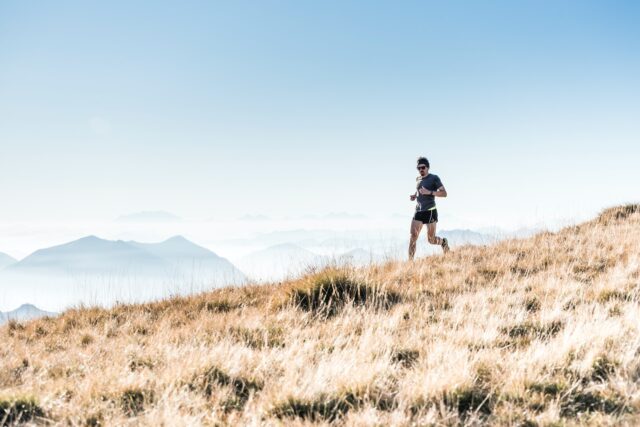
Tired of jogging around city parks? Looking to take your running experience to the next level? Interested in participating in the Skyrunning World Series or Ultra-Trail World Tour? Then it’s time to start mastering technical trails! In this article, we’ll show you how they differ from regular terrains and how to prepare yourself for a technical trail run. Of course, you can’t do it without the perfect outfit. Visit willpowerpeak.com for guidance on trail shoes and sportswear.
What Are Technical Trails?
The word “technical” in this term means that you will need special skills to complete these trails. The main difference between such routes and the usual ones is their landscape. They can run over hills, deserts, forests, or even mountains. And on your way, you will surely meet numerous stones, protruding tree roots, loose surfaces, water, or mud.
Professional trails are usually characterized by significant elevation changes and very high or low temperatures. For example, some sections of Tor Des Geants in Italy run at an altitude of about 78000 feet. It is a trail of exceptional difficulty; of course, there are also much simpler routes that are suitable for beginners.
7 Tips to Conquer Technical Terrains
Not every runner can master technical trails quickly. You will need some time to prepare and develop a specific running technique that is different from running on a flat surface. Here are 7 basic tips to prepare yourself for a cross-country run.
1. Get your legs and body ready

You need to understand that trail running uses a lot more muscles than jogging due to the variety of surfaces and terrain within even one run. Even if you are an experienced athlete, you will need to incorporate specialized trail running exercises into your workout. They are the key not only for your speed and endurance but also for injury prevention. Professionals recommend adding balance and plyometric exercises to your daily activities. They will improve your proprioception (or kinaesthesia); that is, you will have a better sense of your body in space. You will be able to jump over various obstacles easily and land precisely where you want.
2. Start small
Trail running starts with common parks. You can choose easy forest paths, get used to the stress on your feet, overcome obstacles in the form of stones and tree roots, and then move on to more challenging country tracks.
One of the biggest mistakes the vast majority of novice runners make is that they think they need to run fast, and a workout should be intense. But it is not the case. When you start, most of your runs should be as calm as possible, at a low heart rate. It is better to measure heart rate with a chest monitor, as it is much more accurate than wrist devices. If it is not possible to purchase one, then learn to count your pulse using a regular watch or stopwatch on your phone and do it regularly while working out.
3. Buy the right gear

When preparing for running in natural terrain, pay attention to your footwear. You need specialized trail running shoes, although casual trainers are often sufficient on the simplest routes. The more complicated the terrain, especially in the mountains, the more important the protection of your foot, stability, and traction are.
Sportswear should be lightweight, breathable, not hinder your movements, and wick away moisture. Additionally, you will need a small backpack that can hold a bottle of water, some food (energy gels, chews, or bars), a first aid kit, and sunscreen. You may also need a GPS unit, flashlight, trekking poles, and extra clothing for longer runs.
4. Work on your technique
As already mentioned, technical trails offer a completely different level of stress on your body. Watch your strides first. They should not be as long as when running on a flat surface. It will help you keep your balance if you step on a rock accidentally. Never look at your feet. Your gaze should be directed forward and downward so that you can track the terrain and plan your next movements. Remember to use your hands as an engaging upper body will give you more stability on loose surfaces. If there are areas where it is difficult for you to run on the chosen route, walk on them.
5. Watch your feet speed

This point follows from the previous one and is the key to overcoming even the most challenging terrain successfully. You should take short strides but move your legs quickly. It is extremely important when running over rocks or surfaces that are crumbling. Try not to make stop-and-go movements; your feet should be in contact with the track for as little time as possible. You can use a regular agility ladder to train fast legs and short strides.
6. Do not try to set a record
When mastering technical trails, do not strive for the first place or large numbers in the form of several hundred kilometers. Trail running is primarily a competition with yourself. Focus on the route, control your every movement, and do not hesitate to walk difficult sections. After all, your goal should be simply to reach the finish line, no matter what place you’ll take. By the way, many professionals evaluate their results during a workout, not by the number of kilometers but the number of hours spent on the track.
7. Take breaks between workouts

The alternation of load and recovery is very important to your progress. That is, you should have both periodic running sessions and regular and high-quality rest to recover. Frequent but not too long runs with regular rest days give a much greater positive effect than 1-2 runs per week for many kilometers.
8. Find Your Own Way
Run wherever you like. Take part in the races that inspire and motivate you. Do not copy other athlete’s training plans. At best, it will not lead to anything; at worst, self-torture can be simply dangerous for your body. Run to support your health and, most importantly, have fun. If you enjoy hours of testing your body and spirit, love pushing boundaries, and discovering your limits, then technical trail running is for you!







